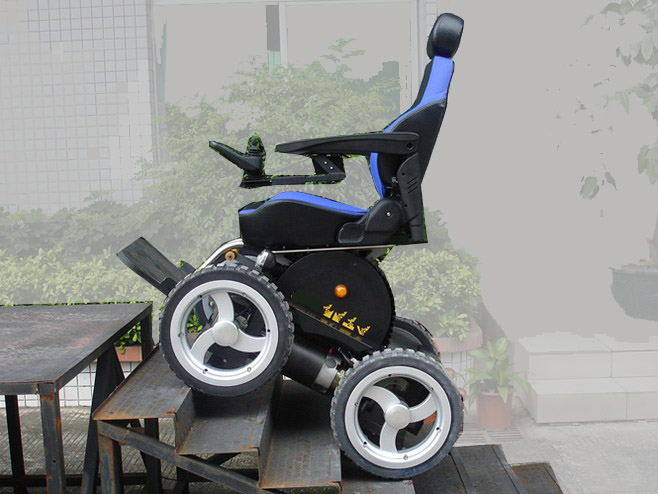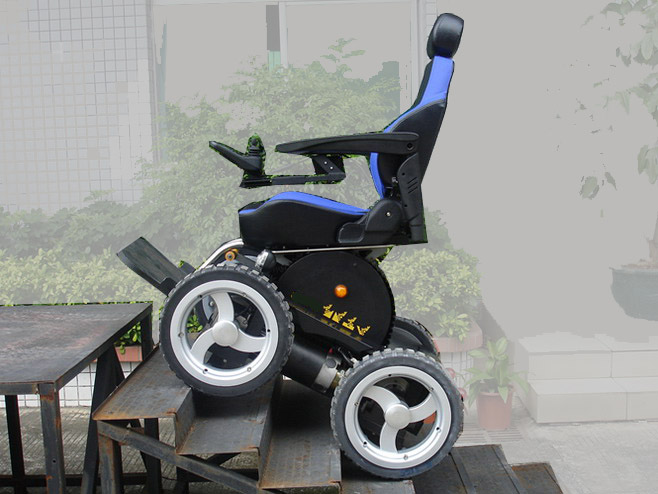Assistive Technology: Not a Replacement for Social Responsibility
Tuesday, April 18, 2017


One of the most exciting parts of working for the Michigan Assistive Technology Program is that it puts me in social media circles where I am more likely to see the latest prototypes of equipment and devices. It seems like I see some sort of device, app, or equipment that amazes
m
e every day, Just this week, I came across, gloves that turn sign language into speech, an electric mountain biking handcycle, and a wheelchair accessible motorcycle. The potential of assistive technology is limitless, and the ingenuity of people who develop new technologies keeps me in a constant state of awe.
Yet, I keep thinking back to a conversation I had several days ago, I was talking with a woman who asked about my career, When I told her I worked with assistive technology and explained what that was, she immediately became very excited, and recalled a video she saw online of a stair-climbing wheelchair. “Isn’t it great?” she exclaimed, “Pretty soon we won’t even need to build ramps!”
 No. Not great, for several reasons. First, and most obviously, Many of these innovations that we are seeing are prototypes, They may or may not ever become available on the mainstream market. If they do become available on the market, it is most likely that only the most affluent, who are able to pay out of pocket, will be able to obtain them. Most assistive technology tends to be low cost/lower tech and paid for by insurance, People with disabilities and advocates are fighting for coverage of even the most basic equipment (durable medical equipment is an excellent example), let alone the latest cutting edge designs.
No. Not great, for several reasons. First, and most obviously, Many of these innovations that we are seeing are prototypes, They may or may not ever become available on the mainstream market. If they do become available on the market, it is most likely that only the most affluent, who are able to pay out of pocket, will be able to obtain them. Most assistive technology tends to be low cost/lower tech and paid for by insurance, People with disabilities and advocates are fighting for coverage of even the most basic equipment (durable medical equipment is an excellent example), let alone the latest cutting edge designs.
Secondly, the argument that stair climbing wheelchairs would negate the need for ramps in based the medical model of disability. It’s saying to people with disabilities that their disabilities are the “problem”, and puts the responsibility on them to negotiate a world that is not accessible to them. It puts the social responsibility of access as a civil right on technology and not on society, where it should be. As a person with a disability, I am given the message that I am the problem, and that being afforded accommodations is “special” or “extra” in a thousand different ways every day. In reality, my disability is a gift, not a problem. The problem lies with society and the idea that we need to be fixed or in some way made better by technology instead of being granted the same access (physical and otherwise) as everyone else.
Finally, sometimes, the latest and greatest technology cannot and should not take the place of other methods or technology. For example, many people now argue that there is no longer a need for people who are blind to learn Braille because screen readers and other auditory technologies are available. However, by relying solely on auditory technology, a person may be missing out on important literacy skills. There are also places where Braille may be the only way to obtain necessary information, such as locations and orientation within buildings. It is also important to consider that communication via Braille and American Sign Language are very important aspects of disability (Blind, Deaf) community and culture.
Innovations in assistive technology are a wonderful, exciting thing. I am certainly not arguing that progress and development should stop. However, technology should not take the place of the social responsibility we have to provide access and accommodations to all – it is a civil right. We also must be mindful that these cutting edge technologies may not be available or appropriate for everyone, and that existing technology and methods often play an important role in the disability community, pride, and culture.

